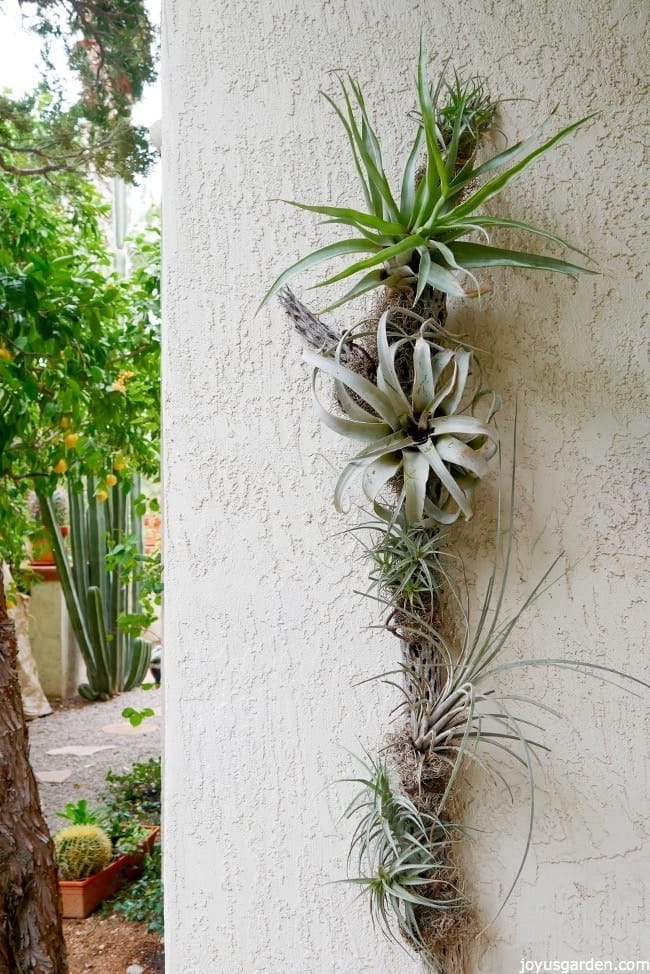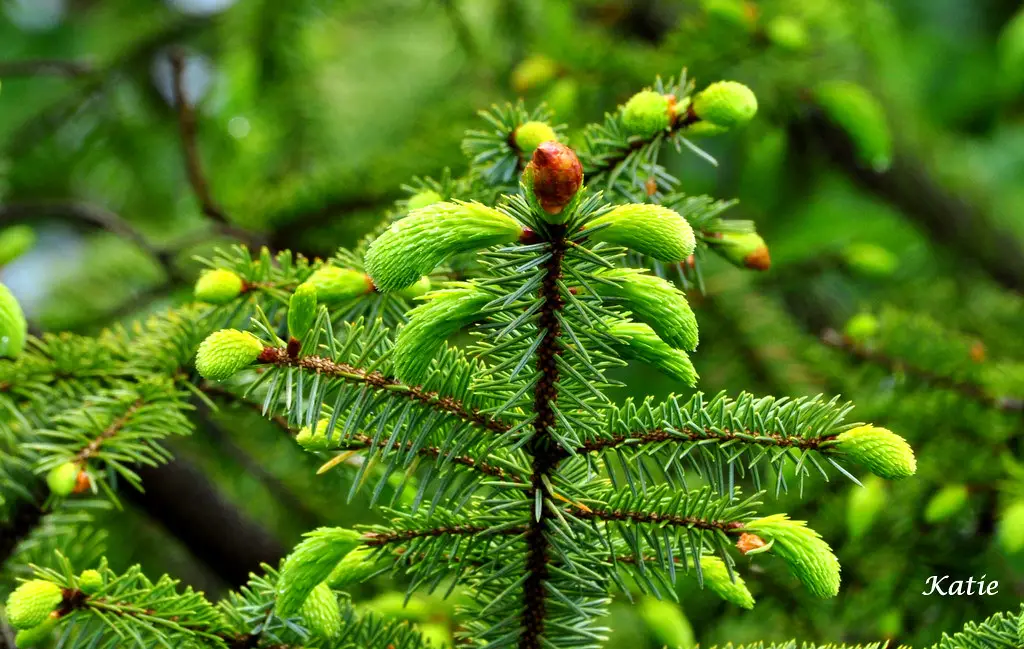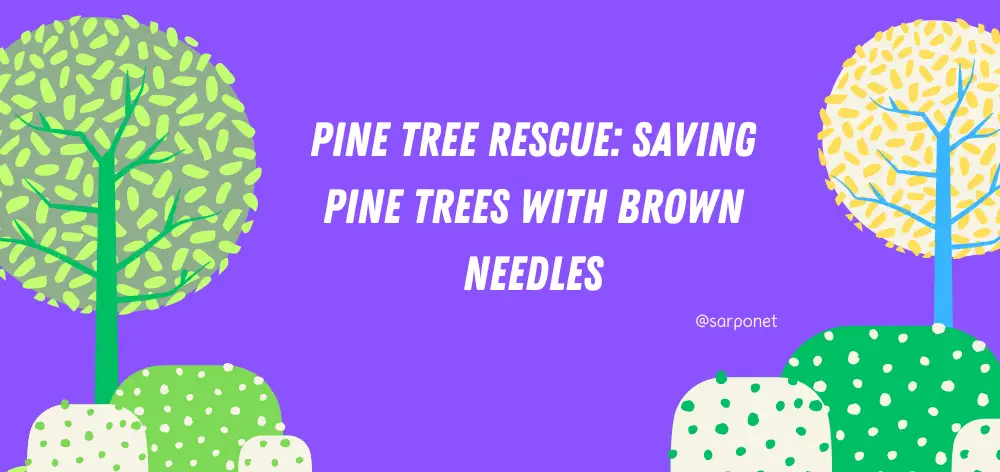How to Attach Air Plants to Wood: Step-by-Step Guide
Air plants are a type of plant that doesn’t need soil to grow. These unique plants can get all the nutrients and moisture they need from the air around them. You may have seen air plants displayed in creative ways, such as being attached to wood.
If you’re wondering how to attach air plants to wood, it’s actually quite simple. All you need is some glue or adhesive and a few minutes of your time.
- Look for air plants that have a strong root system
- You will need to be able to see the roots in order to attach them to the wood
- If the roots are not visible, gently pull on the plant until they become exposed
- Once the roots are exposed, use a small amount of glue or adhesive to attach the plant to the wood surface
- Be sure not to use too much, as this can damage the plant
- Allow the glue or adhesive to dry completely before watering or handling the plant again
Preparing the Air Plants and Wood
Before attaching air plants to wood, it is important to ensure they have strong root systems. Look for air plants with visible roots, as these will have a better chance of attaching securely. If the roots are not visible, gently pull back the leaves to expose them. This will make it easier to attach the plants to the wood surface.
When selecting the wood surface, make sure it is suitable for attaching air plants. Choose untreated and unfinished wood to avoid any harmful chemicals that could harm the plants. Additionally, ensure that the wood surface is clean and free from any debris.
Choosing the Right Glue or Adhesive
Choosing the right glue or adhesive is crucial for securely attaching air plants to wood. Here are some options to consider:
- Hot glue: Hot glue is a popular choice for attaching air plants to wood due to its quick drying time and strong hold. Apply a small dot of hot glue to the desired surface and press the base of the air plant into it. Hold it in place until the glue sets and dries completely.
- Gorilla Glue: Gorilla Glue is a strong adhesive that can be used for attaching air plants to wood. However, it should be used with caution as it can damage delicate leaves. Apply Gorilla Glue to both the wood surface and the air plant’s base, then press them together. It is important to use Gorilla Glue sparingly, as it expands as it dries.
- Clear silicone adhesive: Clear silicone adhesive is another option for attaching air plants to wood. It provides a strong and durable bond while remaining flexible. Apply the silicone adhesive to both surfaces and press them together. Allow the adhesive to dry completely before handling the air plant.
- E6000 glue: E6000 glue is a versatile and strong adhesive that can be used to attach air plants to wood. It is important to work in a well-ventilated area and follow the manufacturer’s instructions when using E6000 glue. Apply it to both surfaces and press them together. Allow the glue to dry completely before watering or handling the air plant.
Step-by-Step Guide on How to Attach Air Plants to Wood
Now let’s go through a step-by-step guide on how to attach air plants to wood using hot glue as an example:
- 1. Prepare the air plant and wood surface by ensuring they are clean and dry.
- 2. Heat up a hot glue gun and insert a glue stick.
- 3. Apply a small dot of hot glue to the desired spot on the wood surface.
- 4. Immediately press the base of the air plant into the hot glue, making sure it is secure.
- 5. Hold the air plant in place until the glue sets and dries completely.
- 6. Allow the glue to dry for the recommended time before watering or handling the air plant again.
Caring for Air Plants on Wood
After attaching air plants to wood, it is important to provide them with proper care to ensure their health and longevity.
- Watering air plants on wood: Air plants on wood should be watered by misting them with filtered or distilled water. Make sure the wood surface is sealed to prevent any water damage. Mist the air plants evenly, ensuring all parts of the plant receive moisture. Allow the plants to dry completely before misting them again.
- Providing proper light and environment: Place the air plants on wood in a location that provides bright, indirect light. Avoid placing them in direct sunlight, as it can scorch the leaves. Ensure proper airflow around the plants to promote healthy growth.
Alternative Methods: Attaching Air Plants to Other Materials
Aside from wood, air plants can also be attached to other materials for unique displays.
- Attaching air plants to trees: Smooth bark trees can serve as a natural surface for air plants to attach to. Wetting the tree bark slightly can help the air plant’s roots stick to the surface. Mist the air plant after attaching it to the tree and place it in a location with bright, indirect light.
- Attaching air plants to shells: Shells can be used as a decorative base for air plants. They can be attached using glue, wire, or other materials. Ensure that the glue used is safe for plants and fully dry before attaching the air plant. If using wire, wrap it around the base of the plant and thread it through the shell for a secure attachment.
- Attaching air plants to crystals: Attaching air plants to crystals creates a unique and eye-catching display. Choose clear quartz or amethyst crystals to allow light to shine through. Select a healthy air plant with strong roots for a secure attachment. Gently insert the air plant roots into the crystal and use wire or fishing line if necessary for added support.
How to Water Air Plants on Wood
Air plants are unique in that they don’t require soil to grow. Instead, they get the majority of their nutrients from the air and water. When it comes to watering air plants on wood, there are a few things you need to keep in mind.
First, make sure the wood surface is sealed. This will help prevent the water from soaking into the wood and causing rot or damage. Second, use filtered or distilled water if possible.
This will help ensure that your air plants don’t get a buildup of minerals from tap water. To water air plants on wood, simply mist them with water using a spray bottle or plant mister. Make sure to evenly coat all sides of the plant and give it a good soak.
Allow the plant to dry before misting again.
How to Attach Air Plants to Trees
Air plants are a unique type of plant that doesn’t require soil to grow. Instead, they get the majority of their nutrients from the air and water. Because of this, they’re perfect for attaching to trees!
Here’s how to do it: 1. Start by finding a tree that has smooth bark. You don’t want any rough edges that could damage the air plant’s roots.
2. Wet the tree bark where you’ll be attaching the air plant. This will help the plant roots adhere to the surface better. 3. Take your air plant and gently press it onto the wet tree bark.
Make sure all of the roots are in contact with the tree so that it can start absorbing nutrients right away. 4. Once attached, give the air plant a good misting with water and place it in an area where it will receive bright, indirect light.
How to Attach Air Plants to Shells
Air plants are a type of plant that grows without soil. They get their nutrients from the air and water around them. Many people choose to grow air plants because they are low maintenance and easy to care for.
One way to display air plants is by attaching them to shells. This can be done using glue, wire, or other materials. If you’re using glue, make sure it is safe for use on plants.
You will also need to let the glue dry completely before attaching the plant to the shell.
Wire can be wrapped around the base of the plant and then threaded through the shell. This method may take some practice, but it’s worth it for a more secure attachment.
Once the plant is attached to the shell, you can hang it up or place it on a surface like a table or shelf.
No matter what method you use, make sure your air plant has enough room to grow. Attaching them too tightly to a shell could prevent them from getting the airflow they need to thrive.
With a little care, your air plant-shell combo will be a beautiful addition to your home or office!
How to Attach Air Plants to Crystals
If you’re looking for a unique way to display your air plants, attaching them to crystals is a great option! Here’s how to do it:
1. Start by choosing the crystals you want to use.
You can use any type of crystal, but clear quartz or amethyst are particularly good choices because they allow light to shine through.
2. Next, choose the air plant you want to attach. Make sure it’s a healthy plant that has strong roots.
3. Gently insert the roots of the air plant into the crystal so that it’s securely attached. If necessary, you can use a bit of wire or fishing line to help secure it in place.
What Glue to Use for Air Plants
Air plants are a unique type of plant that doesn’t require soil to grow. Because they don’t need soil, they can be attached to just about any surface using the right type of glue. In this blog post, we’ll discuss what glue to use for air plants and how to attach them securely.
There are two types of glue that we recommend for attaching air plants: hot glue and Gorilla Glue. Hot glue is a great option because it dries quickly and provides a strong hold. Gorilla Glue is also a good choice because it’s waterproof and creates an invisible bond.
Whichever type of glue you choose, make sure that it’s food-safe if your air plant will be in contact with anything that might be eaten (such as fruits or vegetables).
To attach an air plant using hot glue, start by applying a small dot of glue to the surface where you want the plant to go. Then, press the base of the plant into the glue and hold it in place until the glue dries.
If you’re using Gorilla Glue, apply a generous amount of glue to both surfaces that will be joined (the air plant and the attachment surface). Once the surfaces are coated in glue, press them together and hold until dry; this usually takes around 24 hours.
Now that you know what type of glue to use for air plants, get creative and start attaching them to surfaces all around your home!
Mounting Air Plants with Tilly Tacker
E6000 Glue for Air Plants
E6000 glue is a versatile adhesive that can be used for a variety of applications, including attaching air plants to surfaces. This product forms a strong bond and dries clearly, making it an ideal choice for this project. When using E6000 glue, be sure to work in a well-ventilated area and follow the manufacturer’s instructions carefully.
How to Hang Air Plants With String
Air plants are a type of plant that doesn’t need soil to grow. Instead, they get the nutrients they need from the air and water. Air plants are easy to care for and make a great addition to any home.
One way to display air plants is by hanging them with string. This is a simple and elegant way to show off your air plants. Here’s how to do it:
1. Choose a spot to hang your air plant. Make sure there is enough light for the plant, but not too much direct sunlight.
2. Cut a length of string or fishing line that is long enough to reach the chosen spot plus some extra (about 2 feet).
3. Tie one end of the string around the base of the air plant, making sure it’s tight but not too tight. You don’t want to damage the plant.
4. Thread the other end of the string through the chosen spot, then tie it off or secure it in place somehow.
You can use tape, nails, or anything else that will hold it securely in place without damaging whatever surface you’re attaching it to.

What Glue Do You Use to Attach Air Plants?
Air plants are a unique type of plant that don’t require soil to grow. They get the majority of their nutrients from the air and water. Because of this, they can be attached to almost any surface using the right type of glue.
The best glue to use for attaching air plants is clear silicone adhesive. This type of glue will hold your air plant securely in place without damaging the plant. It’s also important to choose a clear silicone adhesive so that it doesn’t discolor the leaves of your air plant.
How Do You Stick Air Plants to Driftwood?
Make sure to read up on the care instructions for your air plants before you get started. You will need to soak your driftwood in water for at least an hour before attaching the air plants. This will help to ensure that your driftwood doesn’t steal too much moisture from the air plants.
To attach the air plants, use a strong glue or adhesive. You can also use wire or fishing line to secure the plants if you prefer. Start by attaching the roots of the plant to the driftwood, then work your way up, securing each leaf as you go.
Once all of the leaves are secured, give the plant a final misting with water and place it in a bright spot out of direct sunlight.
Can You Use Gorilla Glue on Air Plants?
Gorilla Glue is a popular adhesive that can be used for a variety of projects. It’s known for its strength and durability, making it a good choice for bonding materials like wood, metal, and glass. But can you use Gorilla Glue on air plants?
The short answer is yes, you can use Gorilla Glue on air plants. However, there are a few things to keep in mind before doing so. First, Gorilla Glue is an extremely strong adhesive.
This means that it will likely damage the delicate leaves of an air plant if not used carefully. Second, Gorilla Glue expands as it dries. This can cause problems if you’re not careful about how much glue you use and where you apply it.
If you decide to use Gorilla Glue on air plants, make sure to do so sparingly and only on areas where the leaves won’t be damaged. Apply the glue to both surfaces that you want to bond, then wait until it’s dry before joining them together. With these precautions in mind, using Gorilla Glue on air plants can be a great way to add some extra stability to your arrangement!
Can Air Plants Live on Wood?
Yes, air plants can live on wood. There are a few things to keep in mind when growing air plants on wood, though. First, make sure the wood you use is untreated and unfinished.
Treated wood may have chemicals that can be harmful to air plants. Second, if your wood is outdoors, make sure it’s in a shady spot. Direct sunlight can scorch air plants.
Third, water your air plants regularly. They’ll need more moisture than if they were planted in soil because the wood will absorb some of the water.
Frequently Asked Questions:
Can you put air plants on wood?
Yes, you can mount air plants on wood. Air plants, or Tillandsia, are epiphytes that don’t require soil and can be attached to various surfaces, including wood, using wire, glue, or other creative methods. Ensure good air circulation and occasional soaking for the health of the air plants.
What kind of wood glue for air plants?
Use non-toxic, water-resistant wood glue for air plants, ensuring it’s safe for plants and provides a secure bond.
Is it OK to glue air plants?
Yes, it’s okay to glue air plants, but use a non-toxic, water-resistant glue and be mindful of not covering the base too much to allow for air circulation.
Final Takeaway
Attaching air plants to wood is a delightful way to combine the beauty of nature with the rustic charm of wood. With a variety of adhesive options and creative possibilities, you can effortlessly create stunning displays that showcase the unique characteristics of air plants. Whether you choose to decorate your living space with a single air plant on a small wooden plaque or create a living wall art installation, the simplicity and versatility of this process make it accessible to all plant enthusiasts and craft lovers. Get started on your air plant and wood projects today, and let your imagination and creativity flourish!
Related Aricles:
10 Best Small Evergreen Trees with Non Invasive Roots
 Dr Ahsanur Rahman, PHD
Dr Ahsanur Rahman, PHDPine Tree Rescue: Saving Pine Trees with Brown Needles
 Dr Ahsanur Rahman, PHD
Dr Ahsanur Rahman, PHD



